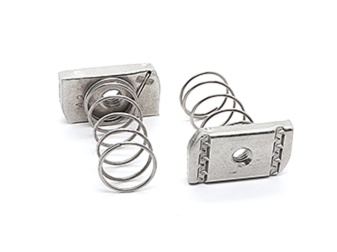সেপ্টে. . 28, 2024 22:38 Back to list
Threaded Rod Size Guide in Millimeters for Various Applications
Understanding Threaded Rod Sizes in Millimeters
Threaded rods are essential components used in a variety of industries, including construction, manufacturing, and automotive applications. They are long, cylindrical pieces of metal that have continuous threading down the entire length. The sizing of threaded rods is crucial for ensuring proper fit and functionality in any project. In this article, we will explore the various sizes of threaded rods available in millimeters, including their specifications and applications.
What is a Threaded Rod?
A threaded rod is a long piece of metal that usually has external threads running along its entire length. These rods can be made from various materials, including steel, stainless steel, and plastic, and they serve multiple purposes, such as fastening together two or more items, acting as a tensioning device, or serving in mechanical applications.
Why Size Matters
Choosing the correct size of threaded rod is vital for the success of any construction or manufacturing project. The size not only affects the load-bearing capacity but also determines compatibility with nuts, bolts, and other fastening devices. Failing to select the right size can lead to structural weaknesses, equipment failure, or safety hazards.
Threaded Rod Sizes in Millimeters
When discussing sizes, threaded rods are typically classified by their diameter and length. In metric measurements, the diameter is often expressed in millimeters (mm), and the length can vary significantly depending on the application.
1. Diameters Common diameters for threaded rods in millimeters include - M3 (3 mm) - M4 (4 mm) - M5 (5 mm) - M6 (6 mm) - M8 (8 mm) - M10 (10 mm) - M12 (12 mm) - M16 (16 mm) - M20 (20 mm) - M24 (24 mm)
threaded rod sizes chart in mm

These sizes correlate to the nominal diameter of the thread and are essential when selecting compatible nuts and washers
.2. Lengths The lengths of threaded rods can also vary widely, typically ranging from 100 mm to 3000 mm or more, depending on project requirements. Standard lengths are available, but custom lengths can be manufactured by suppliers as needed.
Thread Pitch
In addition to diameter and length, thread pitch is another critical aspect. Thread pitch refers to the distance between the threads. Metric threaded rods have standardized pitches, for example - M3 has a pitch of 0.5 mm - M4 has a pitch of 0.7 mm - M5 has a pitch of 0.8 mm - M6 has a pitch of 1.0 mm - M8 has a pitch of 1.25 mm
Selecting the right pitch is essential for ensuring that the threaded rod functions effectively with nuts and other components.
Applications of Threaded Rods
Threaded rods find applications across various fields, including - Construction Used for anchoring structures, connecting beams, and supporting frameworks. - Automotive Commonly found in vehicle assemblies, securing components such as suspensions and engine mounts. - Manufacturing Employed in machinery and equipment to create robust connections between parts.
Conclusion
Understanding the sizes of threaded rods in millimeters is crucial for anyone involved in construction, manufacturing, or mechanical applications. By considering diameter, length, and thread pitch, you can select the appropriate threaded rod to suit your specific needs. Always consult a threaded rod size chart to ensure compatibility and prevent issues during assembly. Whether you’re a DIY enthusiast or a professional, knowing the right specifications will ultimately lead to better, safer, and more reliable projects.
-
Strong Clamps, Safe Lifting
NewsMay.07,2025
-
Reliable Rods for Strong Structures
NewsMay.07,2025
-
Hex Head Wood Screws in Daily Construction
NewsMay.07,2025
-
Hex Head Anchoring Solutions
NewsMay.07,2025
-
Effective Wire Rope Clamps for Secure Lifting
NewsMay.07,2025
-
Anchor Bolts for Secure Ceiling Installations
NewsMay.07,2025


